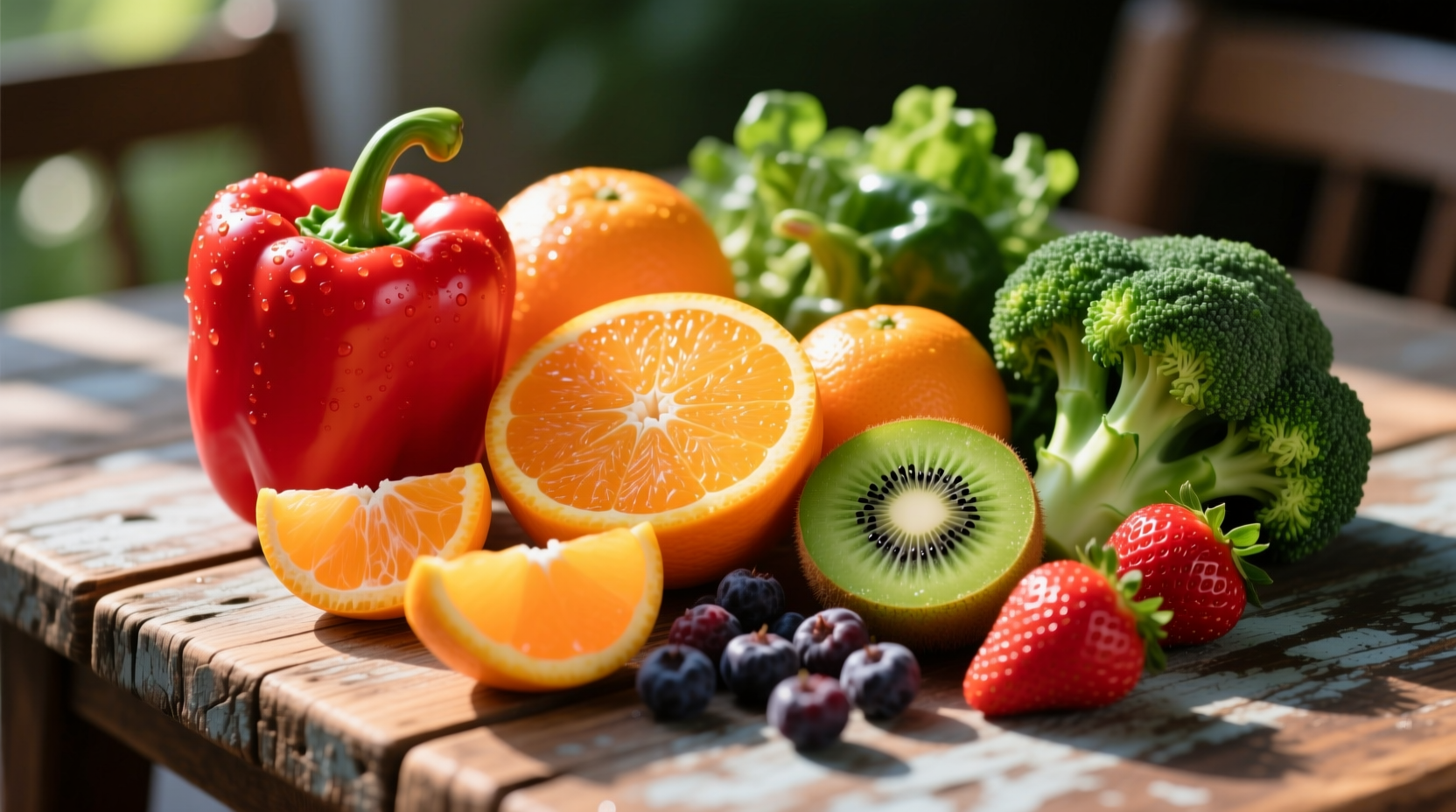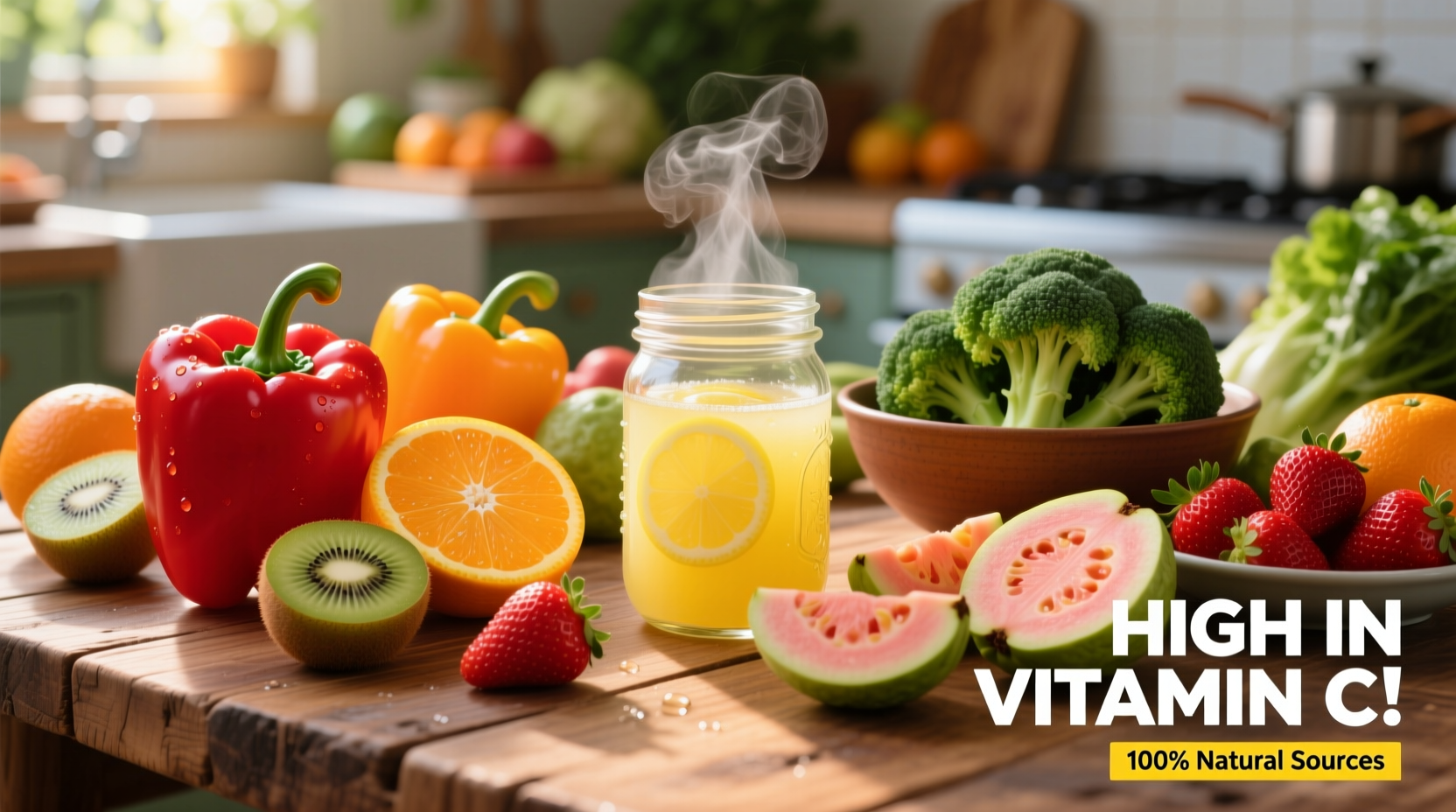Discover exactly which foods pack the most vitamin C punch and how to maximize your intake with this science-backed guide. Whether you're boosting immunity, enhancing skin health, or simply optimizing your nutrition, knowing the top vitamin C food sources makes all the difference in your daily dietary choices.
Why Vitamin C Matters More Than You Think
Vitamin C isn't just for fighting colds. This essential nutrient serves as your body's primary antioxidant, crucial for collagen synthesis, iron absorption, and immune function. According to the National Institutes of Health, adults need 75-90mg daily, with smokers requiring an additional 35mg due to increased oxidative stress.
Unlike most animals, humans can't produce vitamin C internally, making dietary intake absolutely essential. Missing your daily requirement leads to fatigue, weakened immunity, and in severe cases, scurvy—a condition historically fatal to sailors before citrus became standard shipboard provisions.
Top 10 Vitamin C Powerhouses Ranked by Nutrient Density
These foods deliver maximum vitamin C per serving while providing additional health benefits. All values reflect raw preparation unless noted:
- Yellow Bell Peppers (341mg per 150g) - Surprisingly the #1 source, containing nearly 4x more vitamin C than oranges
- Kiwi (164mg per 150g) - Also rich in potassium and fiber, with edible skin for extra nutrition
- Guava (165mg per 150g) - Contains both vitamin C and lycopene, best eaten ripe with seeds
- Broccoli (132mg per 150g cooked) - Steaming preserves 90% of vitamin C versus boiling's 50% loss
- Strawberries (149mg per 150g) - Highest vitamin C among common berries, plus anthocyanins
- Oranges (70mg per medium fruit) - Most recognized source, but not the most concentrated
- Papaya (120mg per 150g) - Contains digestive enzyme papain alongside vitamin C
- Brussels Sprouts (96mg per 150g cooked) - Roasting concentrates nutrients better than boiling
- Pineapple (95mg per 150g) - Bromelain enzyme enhances vitamin C absorption
- Grapefruit (78mg per half fruit) - Contains naringenin that boosts vitamin C effectiveness
| Food (150g serving) | Vitamin C (mg) | Daily Value % | Key Additional Nutrients |
|---|---|---|---|
| Yellow Bell Pepper | 341 | 379% | Vitamin A, B6, folate |
| Kiwi | 164 | 182% | Potassium, fiber, vitamin K |
| Guava | 165 | 183% | Lycopene, dietary fiber |
| Broccoli (cooked) | 132 | 147% | Vitamin K, folate, chromium |
| Strawberries | 149 | 166% | Manganese, folate, antioxidants |
How Food Preparation Affects Vitamin C Content
Vitamin C's water-soluble nature means cooking methods dramatically impact retention. Research from the USDA FoodData Central shows:
- Raw consumption preserves 100% of vitamin C
- Steaming retains 85-90% versus boiling's 40-60% loss
- Cutting fruits 30 minutes before eating reduces content by 25%
- Refrigeration preserves vitamin C better than room temperature storage
- Cooking in cast iron pans increases vitamin C degradation by 30%

Practical Strategies for Maximizing Daily Intake
Boost your vitamin C consumption with these chef-tested techniques that maintain nutrient integrity:
Smart Shopping Practices
Select deeply colored produce—riper fruits contain higher vitamin C concentrations. At farmers markets, ask growers about harvest timing; vitamin C peaks just before full ripeness. Store citrus at room temperature for 1-2 days before refrigerating to maximize nutrient retention.
Daily Meal Integration
Start your day with kiwi slices on oatmeal (120mg), add bell peppers to lunch salads (150mg), and finish with roasted broccoli (100mg) at dinner. This simple pattern delivers 370mg—more than four times your daily requirement. For snack ideas, frozen mango chunks provide 75mg per serving while satisfying sweet cravings.
Preservation Techniques
Freeze excess produce within 24 hours of purchase—flash freezing preserves 95% of vitamin C versus canning's 60% loss. When juicing, consume immediately as oxidation destroys 20% of vitamin C within 30 minutes. Add lemon juice to cut apples to prevent browning while boosting vitamin C content.
Special Considerations for Different Life Stages
Nutritional needs vary across the lifespan. The Mayo Clinic recommends:
- Pregnancy: 85mg daily - Focus on guava and strawberries which also provide folate
- Smokers: +35mg daily requirement - Prioritize kiwi and broccoli for maximum absorption
- Elderly: Increased needs due to reduced absorption - Combine vitamin C foods with iron-rich meals
- Athletes: 20% higher requirements - Bell peppers provide electrolytes alongside vitamin C
Understanding these variations helps tailor your vitamin C rich food choices to specific health circumstances. Remember that cooking methods significantly impact bioavailability—steaming preserves more nutrients than boiling for cruciferous vegetables like broccoli and Brussels sprouts.
Avoiding Common Vitamin C Myths
Despite widespread knowledge, several misconceptions persist about vitamin C sources:
- Myth: Oranges are the best source - Truth: Bell peppers contain 3x more per serving
- Myth: More is always better - Truth: Excess gets excreted; 2,000mg is the safe upper limit
- Myth: Supplements equal food sources - Truth: Whole foods provide synergistic compounds
- Myth: Cooking destroys all vitamin C - Truth: Smart preparation preserves most nutrients
These clarifications help you make informed decisions about your dietary vitamin C sources without falling for common nutritional misinformation.
Your Vitamin C Action Plan
Start implementing these evidence-based strategies today:
- Replace morning orange juice with whole kiwi (doubles your vitamin C intake)
- Add raw bell peppers to three meals weekly for maximum nutrient density
- Store cut fruits in airtight containers with lemon juice to prevent oxidation
- Steam broccoli instead of boiling to preserve 90% of vitamin C content
- Combine vitamin C foods with iron-rich plant sources to enhance absorption
These simple adjustments transform your nutritional profile without requiring drastic dietary changes. Within weeks, you'll notice improved energy levels and stronger immunity as your body receives optimal vitamin C support.











 浙公网安备
33010002000092号
浙公网安备
33010002000092号 浙B2-20120091-4
浙B2-20120091-4